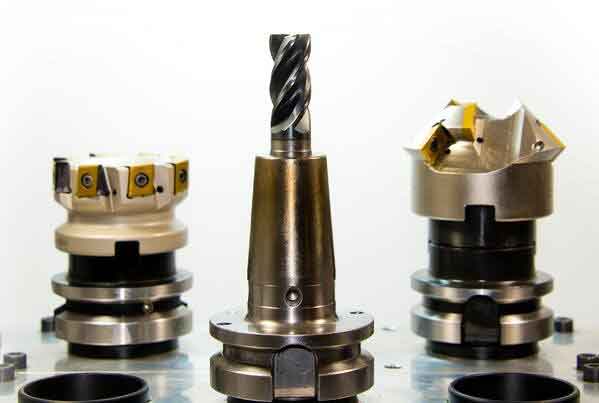Both CNC horizontal and vertical machining centers are used by today’s engineers and manufacturers to create incredibly precise components from a full range of plastics, ceramics, composites, metals, castings, and specialty alloys.
What are CNC Horizontal Milling Machines?
Computer Numerical Control (CNC) technology allows machinists and engineers to control tools such as mills, lathes, routers, cutters, and more with extremely sensitive computer systems. The systems convert drawings and designs from CAM or CAD software into codes specific to a machine’s controls — NC code, G-code, and ISO code being a few examples.
These controls then direct the tool’s operations. The rotating cylindrical cutters in a CNC horizontal milling or machining center move along up to five axes to create the shapes, slots, details, and holes of a three-dimensional part. The machine’s horizontal arbor holds a series of cutters reminiscent of a circular saw blade, though they are thicker and smaller.
>> Read more about our CNC capabilities
Horizontal machining is especially ideal for applications that demand slots, grooves, pocketing, or facing. Regardless of a machine’s function, a horizontal spindle orientation allows manufacturers to work quickly and efficiently, especially with projects that create large amounts of chips. The horizontal layout allows the chips — an inevitable result of high-speed milling — to simply fall away or be easily removed.
CNC Horizontal Machining: Tools and Variations
This style of assembly works well for more than just CNC mills. Additional horizontally oriented CNC tools include:
- CNC Horizontal Lathes — Especially effective for complicated programs that would overwhelm a manual lathe, CNC horizontal lathes make fast, precise cuts while a workpiece is being rotated on a horizontal axis.
- CNC Horizontal Machining Centers — This modern style of milling machine comes supported with a full system of additional features, such as automatic tool changers, carousels and magazines, coolant and cutting fluid systems, and specialty enclosures.
- CNC Horizontal Boring Machines or Boring Mills — There are three main varieties of this tool: table, planer, and floor. The table is the most universal, though all serve the same purpose of boring holes into a workpiece horizontally.
Industries and Products
Horizontal machining is particularly effective for heavy parts, as well as those that need to be worked on multiple sides. In addition to more efficient management of chips, horizontal set-ups typically offer shorter processing times due to the operators’ ability to swap pallets. They also tend to be associated with lower prices due to reduced labor and machining time overall.
CNC milling and machining is especially valuable to the production of large parts that demand significant floor space, such as aircraft and aerospace panels or components. It also supports projects for:
- Commercial applications
- Building and maintenance
- Electronics
- Medicine
- Security
- Recreation
- Transportation
- Automotive
- Industrial and O.E.M.
Prototyping and custom design are also popular applications of CNC horizontal cutters due to their efficiency, flexibility, and increasingly affordable tooling costs.
For more information on precision CNC milling, the unique benefits of CNC horizontal milling machines, or the best CNC milling solution for your next project, visit some of these informative pages:


